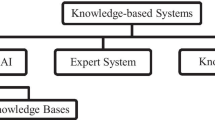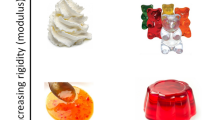Abstract
The calorie value of the food items taken by the person in everyday life needs to be monitored to reduce the risk of obesity, heart problems, and diabetes, etc. The calorie estimator in the existing models has reduced accuracy since the calorie value of each food varies with mass. This paper introduces a dietary assessment system based on the proposed Cauchy, Generalized T-Student, and Wavelet kernel based Wu-and-Li Index Fuzzy clustering (CSW-WLIFC) based segmentation and the proposed Whale Levenberg Marquardt Neural Network (WLM-NN) classifier. The proposed CSW-WLIFC based segmentation segments the image based on the existing WLI-FC algorithm. A novel CSW based kernel function is utilized in the segmentation process. Feature vectors such as color, shape, and texture are extracted from the segmented image. The Neural Network is trained with the Whale-Levenberg Marquardt (WLM) model to recognize each food item from the tray image. The proposed calorie estimator calculates the calorie value of each food item. From the simulation results, it is evident that the proposed model has the improved performance than the existing models with the values of 0.999, 0.9643, 0.9627, and 0.0184 for the segmentation accuracy, macro average accuracy, standard accuracy, mean square error, respectively.












Similar content being viewed by others
References
Martinel N, Piciarelli C and Micheloni C 2016 A supervised extreme learning committee for food recognition. Comput. Vis. Image Underst. 148: 67–86
Liu C, Cao Y, Luo Y, Chen G, Vokkarane V, Ma Y, Chen S and Hou P 2017 A new deep learning-based food recognition system for dietary assessment on an edge computing service infrastructure. IEEE Trans. Serv. Comput. 11(2): 249–261
Foster E and Bradley J 2018 Methodological considerations and future insights for 24-hour dietary recall assessment in children. Nutr. Res. 51: 1–11
Biasse M A D, Bowen D J, Quatromoni P A, Quinn E and Quintiliani L M 2018 Feasibility and acceptability of dietary intake assessment via 24-hour recall and food frequency questionnaire among women with low socioeconomic status. J. Acad. Nutr. Diet. 118(2): 301–307
He H, Kong F and Tan J 2016 DietCam: Multi-view food recognition using a multi-kernel SVM. IEEE J. Biomed. Health Inform. 20(3): 848–855
Rahman M H, Pickering M R, Kerr D, Boushey C J and Delp E J 2012 A new texture feature for improved food recognition accuracy in a mobile phone-based dietary assessment system. In: Proceedings of IEEE International Conference on Multimedia and Expo Workshops (ICMEW), Melbourne, VIC, Australia, pp 418–423
Zhu F, Bosch M, Boushey C J and Edward, Delp J 2015 Multiple hypotheses image segmentation and classification with application to dietary assessment. IEEE J. Biomed. Health Inform. 19(1): 377–388
Velvizhy P, Pavithra and Kannan A 2014 Automatic food recognition system for diabetic patients. In: Proceedings of IEEE Sixth International Conference on Advanced Computing (ICoAC), Chennai, India
Mistura L, Sette S and Mahony C 2013 Modelling framework for the assessment of dietary exposure to added flavouring substances within the FACET (Flavours, Additives, and Food Contact Material Exposure Task) project. Food Chem. Toxicol. 58: 236–241
Jia W, Yue Y, Fernstrom J D, Yao N and Sclabassi R J 2012 Imaged based estimation of food volume using circular referents in dietary assessment. J. Food Eng. 109(1): 76–86
Mogale D G, Kumar S K, Tiwari M K 2016 Two stage Indian food grain supply chain network transportation-allocation model. IFAC PapersOnLine 49(12): 1767–1772
Bag S, Tiwari M K and Chan F T S 2017 Predicting the consumer’s purchase intention of durable goods: An attribute-level analysis. J. Bus. Res. Available online 6 December
Kagaya, H, Aizawa K and Ogawa M 2014 Food detection and recognition using convolutional neural network. In: Proceedings of ACM International Conference on Multimedia, Orlando, Florida, USA, pp. 1085–1088
Anthimopoulos M, Dehais J, Diem P and Mougiakakou S 2013 Segmentation and recognition of multi-food meal images for carbohydrate counting. In: Proceedings of IEEE International Conference on Bioinformatics and Bioengineering (BIBE), Chania, Greece, pp. 1–4
Pouladzadeh P, Villalobos G, Almaghrabi R and Shirmohammadi S 2012 A novel SVM based food recognition method for calorie measurement applications. In: Proceedings of IEEE International Conference on Multimedia and Expo Workshops, Melbourne, VIC, Australia, pp. 1–4
Shroff G, Smailagic A and Siewiorek D P 2008 Wearable context-aware food recognition for calorie monitoring, In: Proceedings of 12th IEEE International Symposium on Wearable Computers, Pittsburgh, PA, USA, pp. 119–120
Zhu F, Bosch M, Woo I, Kim S Y, Boushey C J, Ebert D S and Delp E J 2010 The use of mobile devices in aiding dietary assessment and evaluation. IEEE J. Sel. Top. Signal Process. 4(4): 756–766
Kong F and Tan J 2012 DietCam: Automatic dietary assessment with mobile camera phones. Pervasive Mob. Comput. 8(1): 147–163
Bosch M, Zhu F, Khanna N, Carol J, Boushey and Delp E J 2011 Combining global and local features for food identification in dietary assessment. In: Proceedings of IEEE International Conference on Image Processing, Brussels, Belgium, pp. 1789–1792
Kuhad, P, Peddi S V B, Yassine A and Shirmohammadi S 2016 Food calorie measurement using deep learning neural network. In: Proceedings of IEEE Technology Conference on International Instrumentation and Measurement, Taipei, Taiwan, pp. 1–6
Tammachat N and Pantuwong, N 2014 Calories analysis of food intake using image recognition. In: Proceedings of IEEE International Conference on Information Technology and Electrical Engineering (ICITEE), Yogyakarta, Indonesia, pp. 1–4
Anthimopoulos M M, Gianola L, Scarnato L, Diem P and Mougiakakou Stavroula G 2014 A food recognition system for diabetic patients based on an optimized bag-of-features model. IEEE J. Biomed. Health Inform. 18(4): 1261–1271
LeCun Y, Bottou L, Bengio Y and Haffner P 1998 Gradient-based learning applied to document recognition. Proc. IEEE 86(11): 2278–2324
Mogale D G, Kumar M, Kumar S K and Tiwaria M K 2018 Grain silo location-allocation problem with dwell time for optimization of food grain supply chain network. Transp. Res. Part E Logist. Transp. Rev. 111: 40–69
Mogale D G, Kumar S K and Tiwari M K 2018 An MINLP model to support the movement and storage decisions of the Indian food grain supply chain. Control Eng. Pract. 70: 98–113
Chih-Hung Wu, Ouyang C, Chen L and Lu L 2013 A new fuzzy clustering validity index with a median factor for centroid-based clustering. IEEE Trans. Fuzzy Syst. 23(3): 1–16
Chander S, Vijaya P and Dhyani P 2018 Multi-kernel and dynamic fractional lion optimization algorithm for data clustering. Alex. Eng. J. 57(1): 267–276
Chander S, Vijaya P 2016 MKF-firefly: Hybridization of firefly and multiple kernel-based fuzzy C-means algorithm. Int. J. Adv. Res. Comput. Commun. Eng. 5(7): 213–216
Ramaiah V S and Rao R R 2016 Speaker diarization system using MKMFCC parameterization and WLIfuzzy clustering. Int. J. Speech Technol. 19(4): 945–963
Bonis T and Oudot S 2018 A fuzzy clustering algorithm for the mode-seeking framework. Pattern Recognit. Lett. 102: 37–43
Liu J, Pham T D, Yan H and Liang Z 2018 Fuzzy mixed-prototype clustering algorithm for microarray data analysis. Neurocomputing 276: 42–54
Fahad M, Aadil F, Rehman Z, Khan S, Shah P A, Muhammad K, Loret J L, Wang H, Lee J W, Mehmood I 2018 Grey wolf optimization based clustering algorithm for vehicular ad-hoc networks. Comput. Electr. Eng. Available online 3 February
Satpathy A, Jian X and Eng H 2014 LBP-based edge-texture features for object recognition. IEEE Trans. Image Process. 23(5): 1953–1964
Fan K and Hung T 2014 A novel local pattern descriptor—Local vector pattern in high-order derivative space for face recognition. IEEE Trans. Image Process. 23(7): 2877–2891
Liu H 2010 On the Levenberg-Marquardt training method for feed-forward neural networks. In: Proceedings of IEEE International Conference on Natural Computation, Yantai, China, pp. 1–5
Mirjalili S and Lewis A 2016 The Whale optimization algorithm. Adv. Eng. Softw. 95: 51–67
Maiyar L M and Thakkar J J 2017 A combined tactical and operational deterministic food grain transportation model: Particle swarm based optimization approach. Comput. Ind. Eng. 110: 30–42
UNIMIB2016 database from. http://www.ivl.disco.unimib.it/activities/food-recognition/. Accessed on 25 March 2017
Ciocca G, Napoletano P and Schettini R 2017 Food recognition for dietary monitoring: A new dataset, experiments, and results. IEEE J. Biomed. and Health Inform. 21(3): 588–598
Author information
Authors and Affiliations
Corresponding author
Rights and permissions
About this article
Cite this article
EMMANUEL, W.R.S., MINIJA, S.J. Fuzzy clustering and Whale-based neural network to food recognition and calorie estimation for daily dietary assessment. Sādhanā 43, 78 (2018). https://doi.org/10.1007/s12046-018-0865-3
Received:
Revised:
Accepted:
Published:
DOI: https://doi.org/10.1007/s12046-018-0865-3




